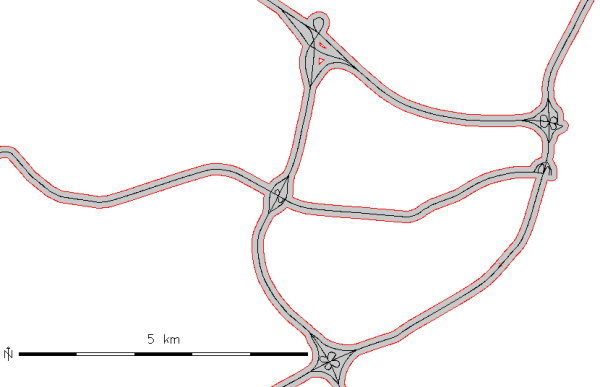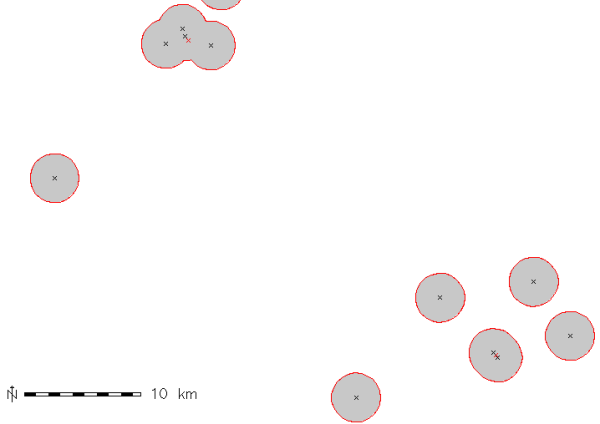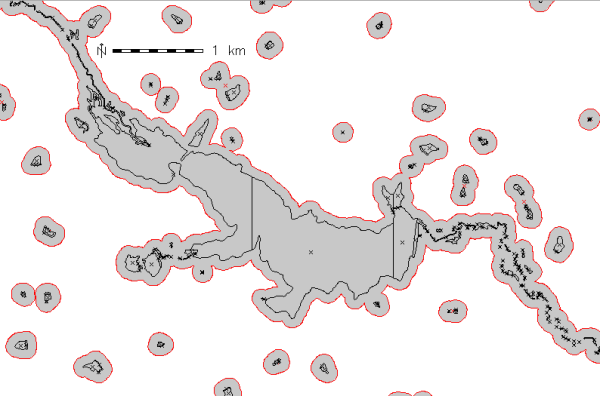
Buffer of 100m along the "roadsmajor" lines (map subset, original center line shown in black)
Categories and attributes can be transferred with the t flag. The resulting buffer areas can have multiple categories, and multiple buffer areas can have the same category. The buffer for the input feature with category X can thus be retrieved by selecting all buffer areas with category X (see example below).
Buffers for lines and areas are generated using the algorithms from the GEOS library.
v.buffer input=roadsmajor output=roadsmajor_buffer type=line distance=100

v.buffer input=hospitals output=hospitals_circled type=point distance=2000

v.buffer input=hospitals output=hospitals_circled type=point distance=1000 -t # display buffer around hospital with category 36, # this buffer is composed of several areas: d.vect map=hospitals_circled type=area layer=1 cats=36 # extract this buffer, dissolving boundaries v.extract in=hospitals_circled output=hospital_36_circled layer=1 cats=36 -d
v.buffer input=lakes output=lakes_buffer type=area distance=100

Last changed: $Date$